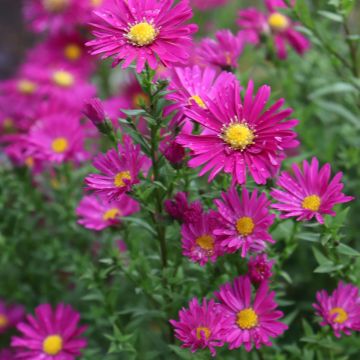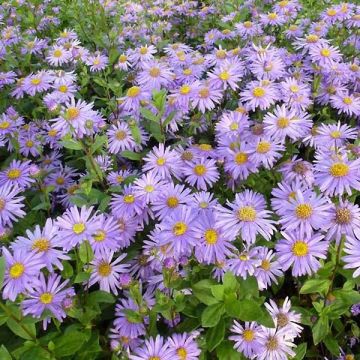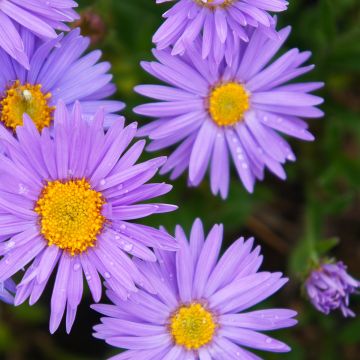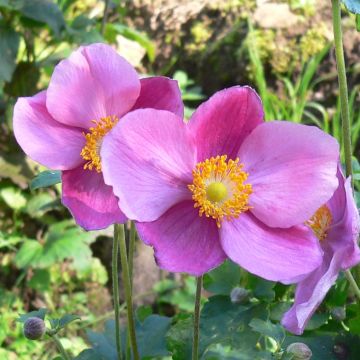

Aster novae-angliae Andenken an Alma Pötschke
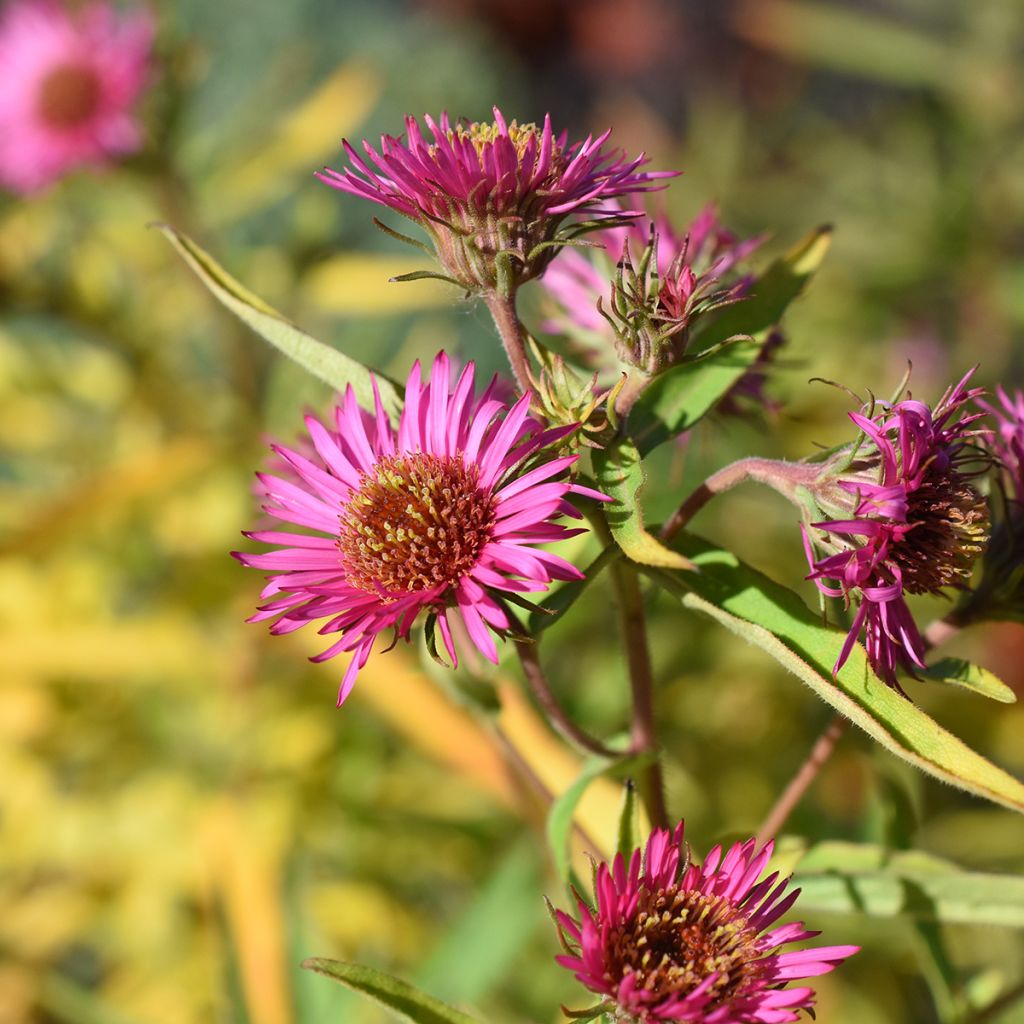

Aster novae-angliae Andenken an Alma Pötschke
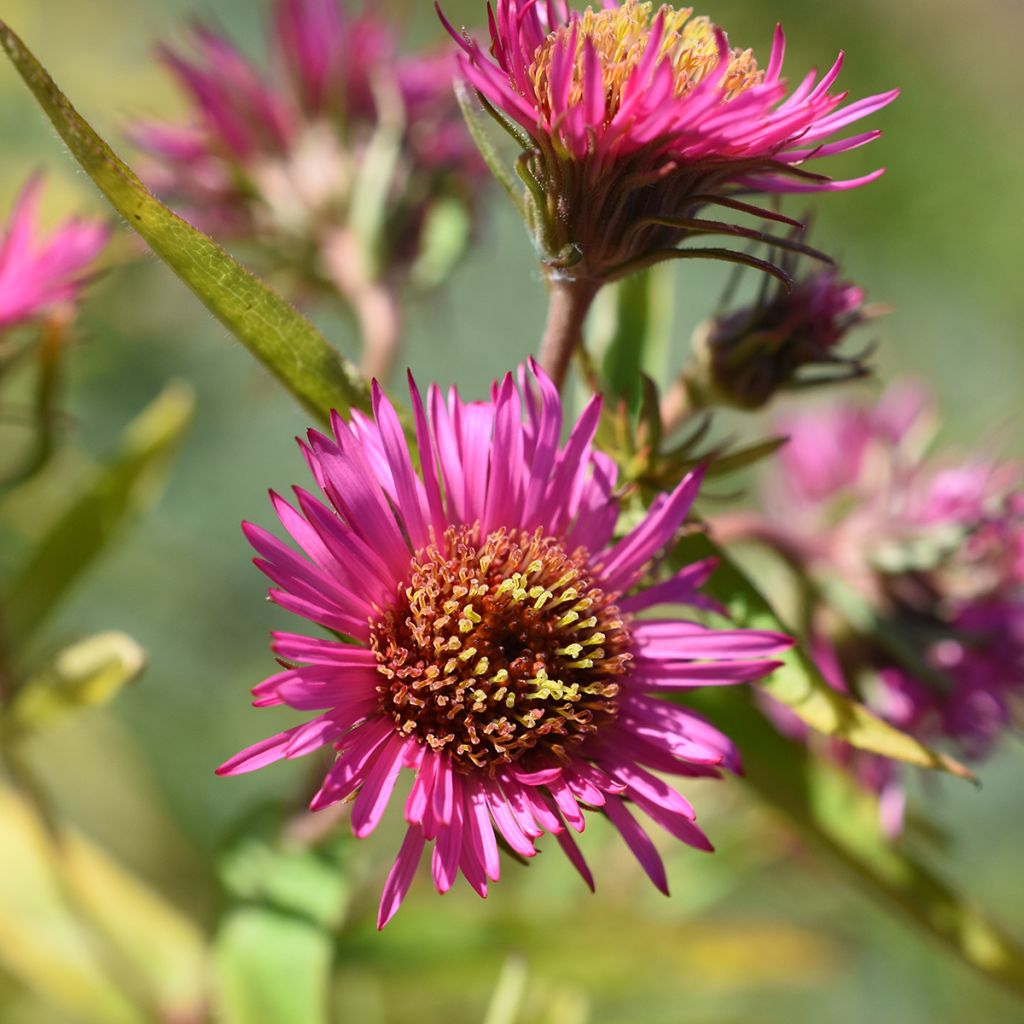

Aster novae-angliae Andenken an Alma Pötschke


Aster novae-angliae Andenken an Alma Pötschke
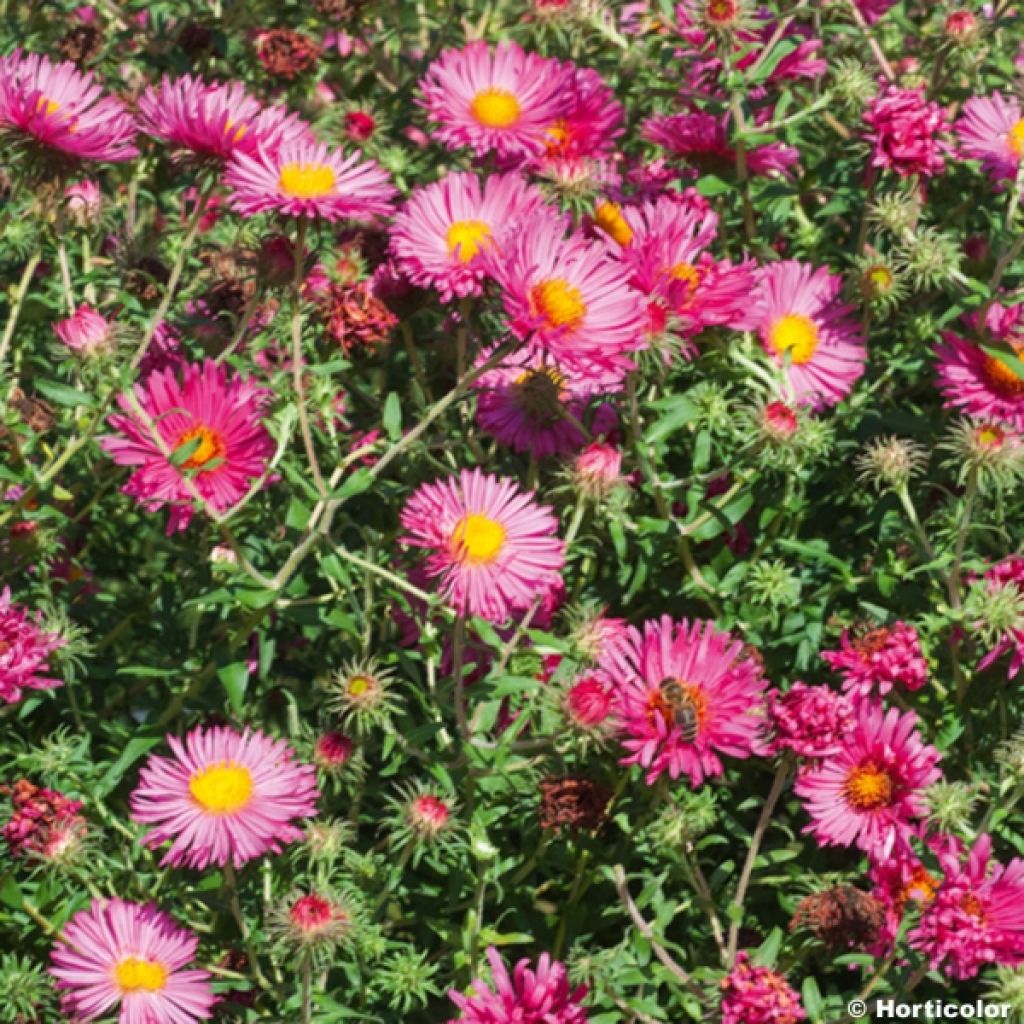

Aster novae-angliae Andenken an Alma Pötschke


Aster novae-angliae Andenken an Alma Pötschke
Aster novae-angliae Andenken an Alma Pötschke
Aster novae-angliae Andenken an Alma Pötschke
New England Aster, Michaelmas Daisy
Received the plant in good condition, very beautiful and of high quality. It has grown quickly with lovely flowers, enhancing the beauty of my garden. Thank you.
Ali, 28/08/2024
This item cannot be shipped to the selected country
Delivery charge from €5.90
Delivery charge from €5.90
More information
Schedule delivery date,
and select date in basket
This plant carries a 12 months recovery warranty
More information
We guarantee the quality of our plants for a full growing cycle, and will replace at our expense any plant that fails to recover under normal climatic and planting conditions.
From €5.90 for pickup delivery and €6.90 for home delivery
Express home delivery from €8.90.
From €5.90 for pickup delivery and €6.90 for home delivery
Express home delivery from €8.90.
Does this plant fit my garden?
Set up your Plantfit profile →
Description
A large number of abundant perennials, in all colours, for spring, summer or autumn, for all uses and growing environments. Autumn hybrids, whether tall or small, will benefit from being divided every 2 to 3 years to regenerate the stump and protect them from powdery mildew.
Very hardy. Has given birth to many varieties. Suitable for any moist to damp, rich and clayey soil. Better performance than Aster novi-belgii; rarely affected by diseases and does not require staking. Despite its "exotic" name, this variety is one of the hardiest and best, with ruby red - truly red - flowers without a hint of purple.
Report an error about the product description
Aster novae-angliae Andenken an Alma Pötschke in pictures




Flowering
Foliage
Plant habit
Botanical data
Aster
novae-angliae
Andenken an Alma Pötschke
Asteraceae
New England Aster, Michaelmas Daisy
Cultivar or hybrid
Other Asters
Planting and care
Pour cultiver l'Aster novae-angliae 'Andenken an Alma Pötschke', choisissez un emplacement en plein soleil, car elle a besoin de beaucoup de lumière pour bien fleurir. Préparez un sol bien drainé, de préférence riche en humus, et légèrement humide, bien qu'il tolère des sols plus ordinaires, argileux et/ou calcaires. Avant la plantation, il est utile d'amender le sol avec du compost pour améliorer sa structure et sa rétention en eau, surtout dans les sols pauvres.
Lors de la plantation, espacez les pieds d'environ 80 à 90 cm pour laisser suffisamment d'air circuler et éviter les maladies comme l'oïdium. Arrosez régulièrement, en période sèche, mais sans excès, car la plante n'aime pas les sols détrempés. Il est conseillé de pincer les tiges plusieurs fois avant la mi-juillet pour favoriser un port plus compact et éviter que la plante ne devienne trop haute, ce qui peut nécessiter un tuteurage.
Pour maintenir une floraison abondante, pensez à diviser la touffe tous les 3 à 4 ans au printemps, car l'aster a tendance à devenir dense avec le temps, ce qui peut réduire sa vigueur. Enfin, un paillis en été peut être utile pour maintenir la fraîcheur du sol et limiter l'arrosage.
L'Aster novae-angliae 'Andenken an Alma Pötschke' est généralement résistant aux maladies, mais la plante peut être sujette à certaines pathologies, notamment l'oïdium et la rouille dans des conditions de mauvaise aération ou d'humidité excessive. Cependant, ces problèmes peuvent être largement évités en plantant l'aster dans un endroit bien ensoleillé, avec une bonne circulation d'air, et en évitant de trop arroser.
Un autre aspect à surveiller est le mildiou qui peut affecter les asters dans les conditions humides. Pour limiter les risques, il est conseillé de pratiquer des tailles régulières pour aérer la plante et de ne pas trop densifier les plantations.
Planting period
Intended location
Care
-
, onOrder confirmed
Reply from on Promesse de fleurs
Foolproof perennials
Haven't found what you were looking for?
Hardiness is the lowest winter temperature a plant can endure without suffering serious damage or even dying. However, hardiness is affected by location (a sheltered area, such as a patio), protection (winter cover) and soil type (hardiness is improved by well-drained soil).

Photo Sharing Terms & Conditions
In order to encourage gardeners to interact and share their experiences, Promesse de fleurs offers various media enabling content to be uploaded onto its Site - in particular via the ‘Photo sharing’ module.
The User agrees to refrain from:
- Posting any content that is illegal, prejudicial, insulting, racist, inciteful to hatred, revisionist, contrary to public decency, that infringes on privacy or on the privacy rights of third parties, in particular the publicity rights of persons and goods, intellectual property rights, or the right to privacy.
- Submitting content on behalf of a third party;
- Impersonate the identity of a third party and/or publish any personal information about a third party;
In general, the User undertakes to refrain from any unethical behaviour.
All Content (in particular text, comments, files, images, photos, videos, creative works, etc.), which may be subject to property or intellectual property rights, image or other private rights, shall remain the property of the User, subject to the limited rights granted by the terms of the licence granted by Promesse de fleurs as stated below. Users are at liberty to publish or not to publish such Content on the Site, notably via the ‘Photo Sharing’ facility, and accept that this Content shall be made public and freely accessible, notably on the Internet.
Users further acknowledge, undertake to have ,and guarantee that they hold all necessary rights and permissions to publish such material on the Site, in particular with regard to the legislation in force pertaining to any privacy, property, intellectual property, image, or contractual rights, or rights of any other nature. By publishing such Content on the Site, Users acknowledge accepting full liability as publishers of the Content within the meaning of the law, and grant Promesse de fleurs, free of charge, an inclusive, worldwide licence for the said Content for the entire duration of its publication, including all reproduction, representation, up/downloading, displaying, performing, transmission, and storage rights.
Users also grant permission for their name to be linked to the Content and accept that this link may not always be made available.
By engaging in posting material, Users consent to their Content becoming automatically accessible on the Internet, in particular on other sites and/or blogs and/or web pages of the Promesse de fleurs site, including in particular social pages and the Promesse de fleurs catalogue.
Users may secure the removal of entrusted content free of charge by issuing a simple request via our contact form.
The flowering period indicated on our website applies to countries and regions located in USDA zone 8 (France, the United Kingdom, Ireland, the Netherlands, etc.)
It will vary according to where you live:
- In zones 9 to 10 (Italy, Spain, Greece, etc.), flowering will occur about 2 to 4 weeks earlier.
- In zones 6 to 7 (Germany, Poland, Slovenia, and lower mountainous regions), flowering will be delayed by 2 to 3 weeks.
- In zone 5 (Central Europe, Scandinavia), blooming will be delayed by 3 to 5 weeks.
In temperate climates, pruning of spring-flowering shrubs (forsythia, spireas, etc.) should be done just after flowering.
Pruning of summer-flowering shrubs (Indian Lilac, Perovskia, etc.) can be done in winter or spring.
In cold regions as well as with frost-sensitive plants, avoid pruning too early when severe frosts may still occur.
The planting period indicated on our website applies to countries and regions located in USDA zone 8 (France, United Kingdom, Ireland, Netherlands).
It will vary according to where you live:
- In Mediterranean zones (Marseille, Madrid, Milan, etc.), autumn and winter are the best planting periods.
- In continental zones (Strasbourg, Munich, Vienna, etc.), delay planting by 2 to 3 weeks in spring and bring it forward by 2 to 4 weeks in autumn.
- In mountainous regions (the Alps, Pyrenees, Carpathians, etc.), it is best to plant in late spring (May-June) or late summer (August-September).
The harvesting period indicated on our website applies to countries and regions in USDA zone 8 (France, England, Ireland, the Netherlands).
In colder areas (Scandinavia, Poland, Austria...) fruit and vegetable harvests are likely to be delayed by 3-4 weeks.
In warmer areas (Italy, Spain, Greece, etc.), harvesting will probably take place earlier, depending on weather conditions.
The sowing periods indicated on our website apply to countries and regions within USDA Zone 8 (France, UK, Ireland, Netherlands).
In colder areas (Scandinavia, Poland, Austria...), delay any outdoor sowing by 3-4 weeks, or sow under glass.
In warmer climes (Italy, Spain, Greece, etc.), bring outdoor sowing forward by a few weeks.







































